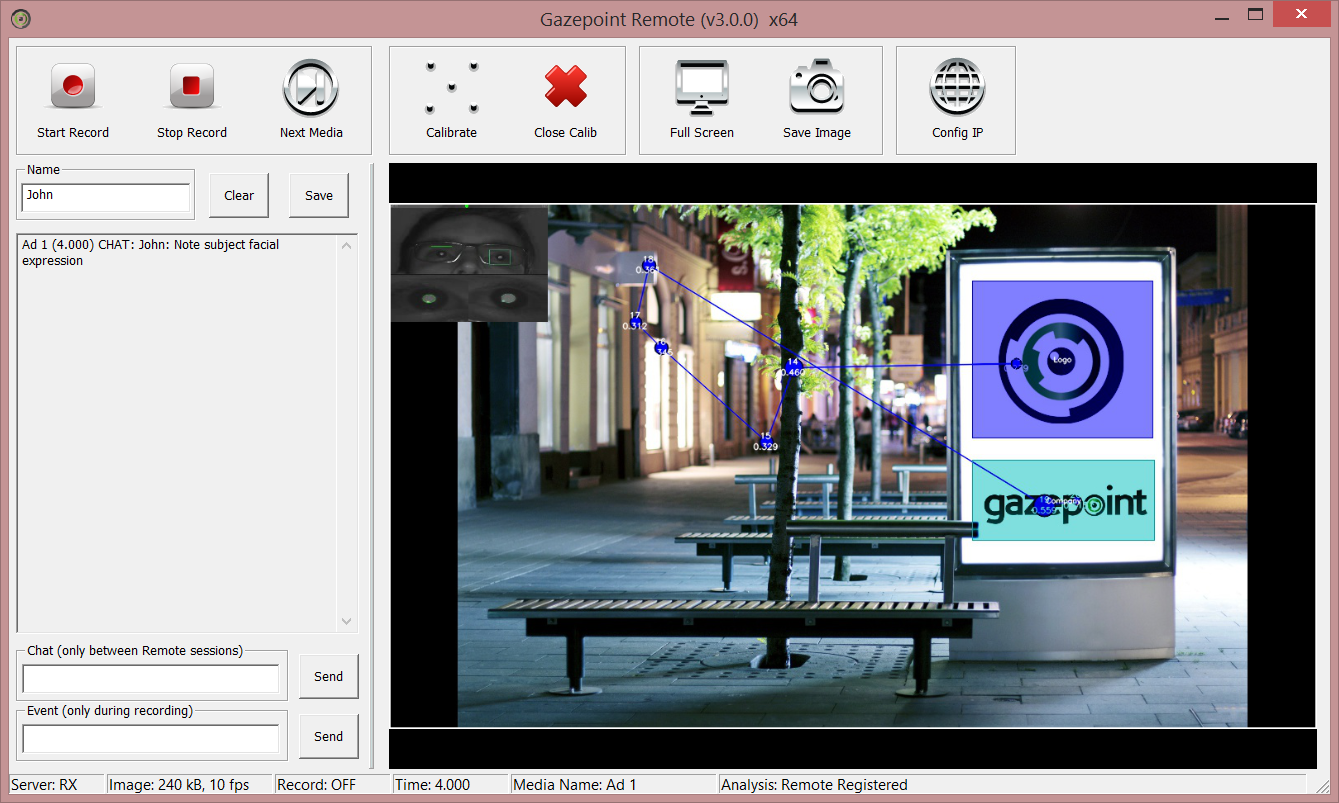
Gazepoint Remote Viewer V3.0.0
The Gazepoint Remote Viewer provides the ability to transmit the images shown in the Gazepoint Analysis software, over a network, to a remote computer for unobtrusive observation of the experiment underway. The core features of Remote include:
- Transmission of Analysis images to remote computers over a TCP/IP network
- High quality images and low bandwidth requirements
- Control of experiment underway (Start / Stop / Next media item)
- Remote chat between multiple Remote clients
- Real-time event logging in the experiment by Remote clients
- Full screen viewing
We quietly introduced the Gazepoint Remote Viewer late last year and over the last months collected feedback on the performance of the system. We originally provided the ability to tune the quality of the image (low to high) to vary the level of bandwidth required. The feedback was a resounding, “Give us the highest quality images at the maximum frame rate with minimum bandwidth!”, so we completely redesigned the underlying video feed protocol. The latest release is able to transmit high quality images at 10 frames per second (fps), using approximately 20 Mbps, easily within a 100 Mbps local area network. The bandwidth/frame rate will depend somewhat on the content being shown to the user (how much image compression is possible) and the underlying network speed. While a LAN (100/1000 Mbps) connection is best, the system will still operate over a lower bandwidth connection such as WiFi or the Internet (WAN), the frame rate may just be lower.
Remote provides the ability to remotely start the recording of the experiment, move the recording to the next media item to be tested, as well as to stop the recording. This can allow the experiment subject full control of their computer (keyboard and mouse), while the Analysis data collection software is controlled from a secondary computer. There is no need to grab the mouse to click STOP or NEXT as the experiment progresses.
As the system is very conservative with bandwidth, it is possible to run multiple remote sessions at the same time, which allows multiple individuals to observe the session in real time. Remote provides the ability to perform real-time chat between Remote sessions which allows communication between Remote observers, or an observer in the same room from interfering audibly with the experiment underway.
In a similar fashion, each Remote observer can record their observations in real time into the data stream of the eye tracking experiment underway. These recorded observations can be overlaid on the Analysis playback during review of the recording.
Finally, we had a number of requests for Full Screen mode in which Remote was displayed on a full wall projector screen to show a larger number of viewers the experiment at the same time. The latest release will allow for full screen viewing which is perfect for projecting or viewing on large screens.


